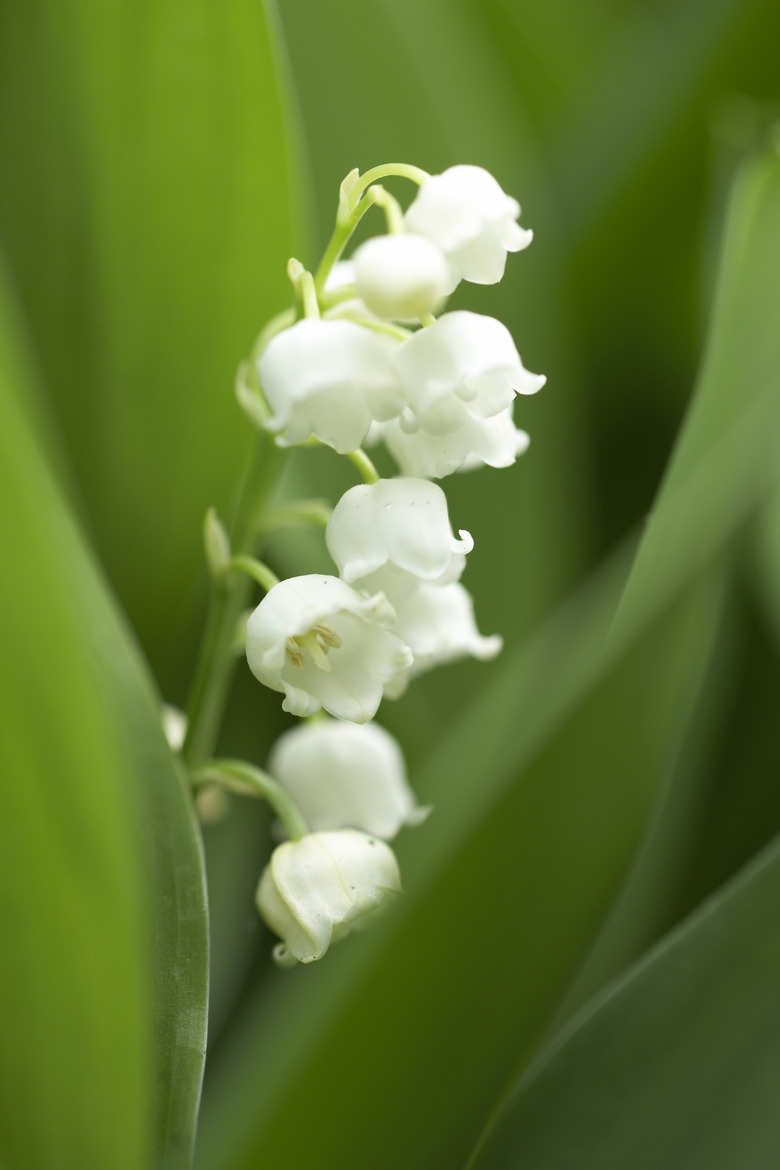How To Care For Lily Of The Valley Flowers
Lily of the valley (Convallaria majalis) features delicate bell-shaped white flowers that grow along a gently arching stem that's surrounded by broad green leaves. They grow in U.S. Department of Agriculture plant hardiness zones 2 through 7, thriving in shaded and partially shaded garden beds with rich, well-drained soil. Lily of the valley flowers in spring and goes dormant in summer and winter. It grows from a thick root, or rhizome, that requires care similar to that of spring bulbs.
Step 1
Step 1
Water lily of the valley plants beginning in early spring when the foliage first begins to emerge. Supply about 1 inch of water weekly so the top 6 inches of soil is moistened.
Step 2
Step 2
Dilute 5 tablespoons of 10-10-10 fertilizer in 1 gallon of water. Water the lily of the valley plants with the solution when they begin sending up leaves, applying 1 gallon of the fertilizer solution to every 10 square feet of garden bed.
- Lily of the valley (Convallaria majalis) features delicate bell-shaped white flowers that grow along a gently arching stem that's surrounded by broad green leaves.
- Water the lily of the valley plants with the solution when they begin sending up leaves, applying 1 gallon of the fertilizer solution to every 10 square feet of garden bed.
Step 3
Step 3
Trim off the old flower stems after the blooms begin to wilt. Cut out the stems at their base. Prune out any foliage that becomes tattered or dies during the spring or summer months. Cut back the entire plant to the soil surface after the foliage yellow in late summer or early fall.
Step 4
Step 4
Dig up the lily of the valley roots in fall after the foliage dies approximately every three years or when the bed becomes crowded. Break the roots apart where they are jointed together. They snap apart easily if you twist them gently. Replant the roots with their tops 1 inch deep and space them about 4 inches apart in all directions.
- Trim off the old flower stems after the blooms begin to wilt.
- Dig up the lily of the valley roots in fall after the foliage dies approximately every three years or when the bed becomes crowded.
Step 5
Step 5
Spread a 2-inch layer of mulch or compost over the garden site in fall before the ground freezes. The mulch protects the roots from temperature fluctuations, conserves soil moisture and provides nutrients as it decomposes.
Tip
Wear gloves when digging in the soil to protect your hands from injury and soil-borne pathogens.
Tip
Lily of the valley rarely suffers pest or disease problems when properly cared for, and most problems it does develop are minor and require no treatment.
Warning
Lily of the valley is highly toxic and can cause death if ingested. The plant may also cause skin irritation. Grow these plants in a location away from children's play areas.
Warning
Lily of the Valley can become invasive because the roots naturalize and reproduce readily. Frequent division can help minimize invasiveness potential.
Things Needed
- 10-10-10 soluble fertilizer
- Watering can
- Shears
- Mulch or compost
